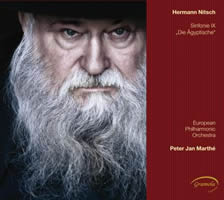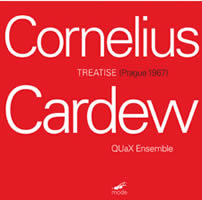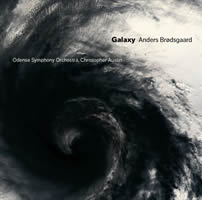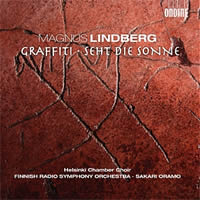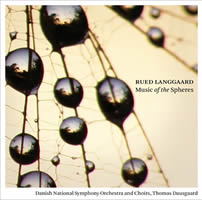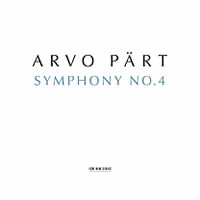Mostly Symphonies 16.
|
Grant Chu Covell [February 2011.]
Hermann NITSCH: Sinfonie IX, “Die Ägyptische” (2009). European Philharmonic Orchestra, Peter Jan Marthé (cond.). Gramola 98880/81 (2 CDs) (http://www.gramola.at/). Distributed in the US by Allegro Music (http://www.allegro-music.com/). A central instigator in the Wiener Aktionismus movement, Nitsch has been celebrated and vilified for events involving paint-splattering, animal disembowelment and nudity. Indeed, the man was arrested for indecency, and yet, more recently, the Vienna State Opera asked him to design sets and costumes for Massenet’s Hérodiade. I studied in Vienna and see no contradiction. The Austrian psyche has no difficulty melding pagan rituals with high art. But is Nitsch a composer? The artist’s all-day events have involved instrumentalists busying at the fringe. Constructing a symphony such as this isn’t an incredible stretch. The aural evidence suggests the score could be graphic or have been realized by an acolyte. Spanning two discs (45:25 + 56:09), the four movements follow a Bruckner-sized traditional plan. Except for the Scherzo and a section in the Finale, there are few actual themes. We hear slowly changing chords played loudly, and clusters punctuated by cries. The third and fourth movements end with resplendent major triads held for several minutes. This Ninth takes us from chaos towards benediction. Out of the blaring anguish emerges a prosaic marching-band tune that repeats without development in the “demonic” scherzo. Perhaps Nitsch’s Ninth is the 19th-century Austrian symphony’s epitome: pedestrian tunes interrupting pathos gradually slipping towards the sublime. Nitsch has reduced Mahler into smeared chords and a banal march, Zarathustra with a hangover. In contrast to Saint-Saëns’ Piano Concerto No. 5, those seeking Egyptian influences will come away disappointed. The title acknowledges Nitsch’s impressions of a visit to that country. Marthé appears to be the perfect conductor for this endeavor. He’s assembled his own versions of Bruckner’s Third and Ninth. The European Philharmonic Orchestra exhibits the necessary endurance: One of its roles takes it to the annual Bruckner performances during the Bruckner Tage at St. Florian. I confess to a double-take when I saw the cover. I had thought it one of Gardiner’s Bach cantata releases on Soli Deo Gloria.
Cornelius CARDEW: Treatise (1963-67). The QUaX Ensemble: Petr Kotik, Pavel Kondelík, Jan Hynčica, Josef Vejvoda, Václav Zahradník. mode 205 (2 CDs) (http://www.moderecords.com/). Mode offers the Parnassus of all graphic scores, Cardew’s Treatise. For any number of musicians employing any instruments, the 193 pages may be performed in whole or in part. The recording took place on October 15, 1967, during the composer’s most experimental phase, well after he had assisted Stockhausen in the late 1950s and before he embraced Communism and disavowed his earlier work. Possibly Cardew’s about-face scared the musical establishment — it’s easier to read about Cardew than actually to hear his music. In 1974 he published the polemic Stockhausen Serves Imperialism, and in 1981 was killed in a still unsolved hit-and-run car accident some colleagues suspect may have been an assassination. Detailed preparation and rehearsal went into the QUaX realization. Overall there seems to be little cause and effect, motivic repetition, or any traditional forms. Except for an applause-inducing voice-plus-piano passage, there’s little that suggests improvisation. Kotik’s notes indicate the players’ primary instruments are flute, tenor saxophone, trombone, percussion and piano. The players had violins and other instruments and oddities. Exploring the 59:29 + 67:31 span in a state of sobriety (each disc is broken into three tracks for convenience), it’s tempting to pinpoint the unexpected rather than take stock of the predominantly intense calm. One hears a trombone executing a Wagnerian motive, and I’m pretty sure I heard a bouncing ping-pong ball on the first disc. Czech speakers ought to be able to tell whether the spoken-word moments are real-time radio or pre-recorded. Kotik’s notes offer a heartfelt perspective.
Anders BRØDSGAARD: Galaxy (1990-93, 1999); Monk’s Mixtures (2009). Odense Symphony Orchestra, Christopher Austin (cond.). Dacapo 8.226551 (http://www.dacaporecords.dk/). Distributed in the US by Naxos (http://www.naxos.com/). Magnus LINDBERG: Graffiti (2009); Seht die Sonne (2007). Helsinki Chamber Choir, Finnish Radio Symphony Orchestra, Sakari Oramo (cond.). Ondine 1157-2 (http://www.ondine.net/). Distributed in the US by Naxos (http://www.naxos.com/). A continually unfolding 42:38 span, Brødsgaard’s Galaxy charts a sure course. Sometimes rosy chords suggest Messiaen, with textured layers recalling Berio. Brødsgaard manages to spin dissonance and darkness without being morose. In Monk’s Mixtures, three tightly crafted orchestral pieces riff upon a chord or several notes. The modal Moving tips its hat to Bartók as much as to Monk, who, in the event, make amicable bedfellows. I’ve noted Brødsgaard’s fluidity before. If Galaxy is nocturnal, then bright and curvy Seht die Sonne is diurnal. Lindberg’s title alludes to Schoenberg’s Gurrelieder wherein his title’s words appear. This music comes a long way from older Lindberg — the composer himself characterizes his transition from angular modernism to a cooler style as “the difference between cutting stone and shaping clay.” Small wonder that a 2005 effort is called Sculpture. Latin text plus rhythm lead my ear to Orff, which in the case of Graffiti is unfair. Lindberg assembled scribbles found at Pompeii, setting random advertisements, slurs and paeans for chorus and orchestra. Generally gentler than earlier Lindberg, the rare dissonance and the unexpected insistent unison towards the end, perhaps suggesting Vesuvius extinguishing the port city, emerge as the more dramatic.
“Music of the Spheres.” Rued LANGGAARD: Sfærernes Musik (1916-18)1; Endens Tid (1921-23/1939-40/1943)2; Fra Dybet (1950/52). Inger Dam Jensen1 (sop), Hetna Regitze Bruun2 (mez-sop), Peter Lodahl2 (ten), Johan Reuter2 (bar). Danish National Symphony Orchestra and Choirs, Thomas Dausgaard (cond.). Dacapo 6.220535 (1 SACD) (http://www.dacapo-records.dk/). Distributed in the US by Naxos (http://www.naxos.com/). This wonderfully strange music from everyone’s favorite Danish loner covers apocalyptic themes. Surprisingly sparse, The Music of the Spheres uses timpani barrages and gently spun tonal melodies to cast spells. Langgaard’s structures are wholly untraditional. Spinning motives foreshadow minimalism. There are few orchestral tuttis across the 15 sections. Massed violins, momentary organ, or a solo voice carry us through movements such as “Longing, Despair, Ecstasy,” “Chaos, Ruin, Far and Away,” and “Flowers wither.” One great climax results in an imponderably long-held chord followed by harp washes. One imagines veils continually lifting. Spin-offs from Langgaard’s opera Antichrist appear in the four-movement The Time of the End wherein Wagnerian opulence blends with tonality. From the Abyss is the most anachronistic item here. Perhaps Langgaard’s shifting tonality and somber organ would have played well in Hollywood. The chorus tunes reflect a love for Bach; their orchestral accompaniments could pass for Schumann or Brahms. Gardiner could have easily dropped this seven-minute item here.
Arvo PÄRT: Symphony No. 4, “Los Angeles” (2008); Fragments from Kanon Pokajanen (1997). Los Angeles Philharmonic, Esa-Pekka Salonen (cond.). Estonian Philharmonic Chamber Choir, Tönu Kaljuste (cond.). ECM 2160 (http://www.ecmrecords.com/). A lifetime separates Pärt’s 1971 Third and the recent Fourth, scored for percussion, harp and strings. No longer does he employ collage or Bach to lash out at totalitarianism. And yet the composer continues to make political statements: The Fourth is dedicated to the imprisoned Mikhail Khodorkovsky. The Los Angeles Philharmonic approached Pärt as he ruminated upon angels. Most providential! DG offered this Fourth as a download almost immediately after its January 2009 premiere. A free score briefly appeared on Universal Edition’s website. Rough entrances suggest another recording might offer better precision and an absence of audience noise. Pärt often subdivides the strings; the rare solo, a weepy violin, remains brief. Typical of Pärt’s dissonant modal language, a bitonal coda pits A major against A minor. An infrequent marimba offers atypical jazzy flourishes. To cap the symphony’s 35 minutes, ECM offers “a new montage” of Kanon Pokajanen which Pärt asserts is a sister work.
Allan PETTERSSON: Concerto No. 1 for Strings (1949-50)1; Symphony No. 12, “Los muertos de la plaza” (1974)2. Swedish Radio Symphony Orchestra1, Stig Westerberg1 (cond.). Stockholm Philharmonic Orchestra2, Stockholm Philharmonic Chorus2, Uppsala University Chamber Choir2, Carl Rune Larsson2 (cond.). Caprice CAP 21369 (http://www.capricerecords.se/). Distributed in the US by Qualiton (http://www.qualiton.com/). Pettersson releases (here and here) are rare, so we should be glad for reissues. A recent search failed to find this 1988 release on Caprice’s site despite Qualiton’s fresh provisioning. Concerto No. 1 was recorded in 1975 and Symphony No. 12 in 1977. The Concerto’s mid-century dissonance aligns with its time, whereas the Twelfth retreats to minor-mode tonality, setting Pablo Neruda’s nine-part Los muertos de la plaza in an oppressively unyielding span notwithstanding a major triad finish. To say the Twelfth is more tonal than the Concerto ignores the symphony’s studiously constructed agitation: a rattling shutter in the midst of a storm.
[More Grant Chu Covell, Mostly Symphonies]
[Previous Article:
Eights and Nines]
[Next Article:
Youri Pochtar's late Liszt]
|
